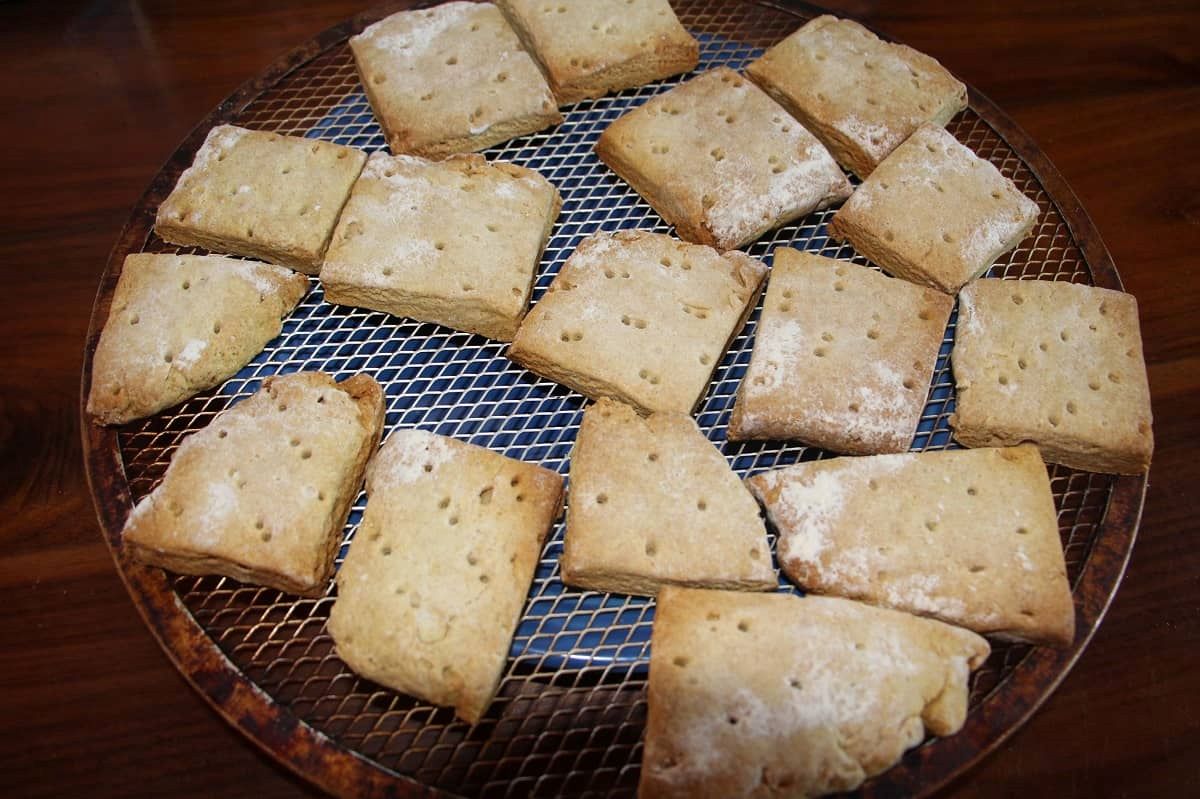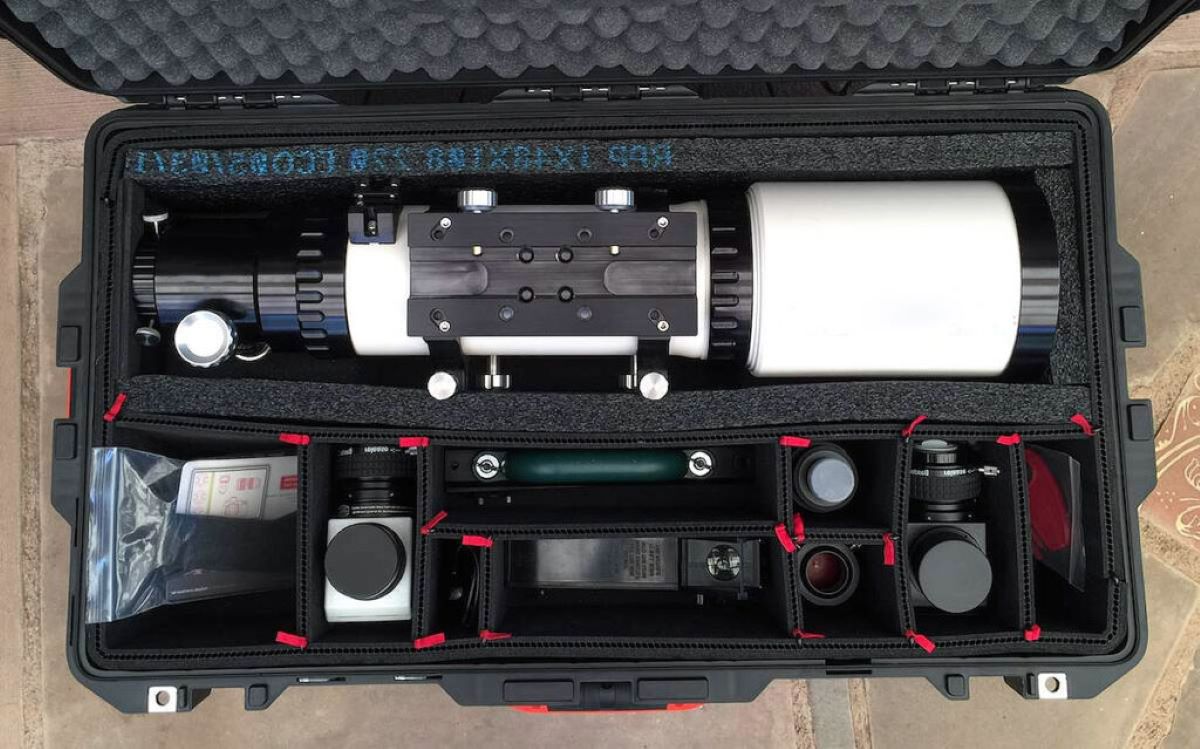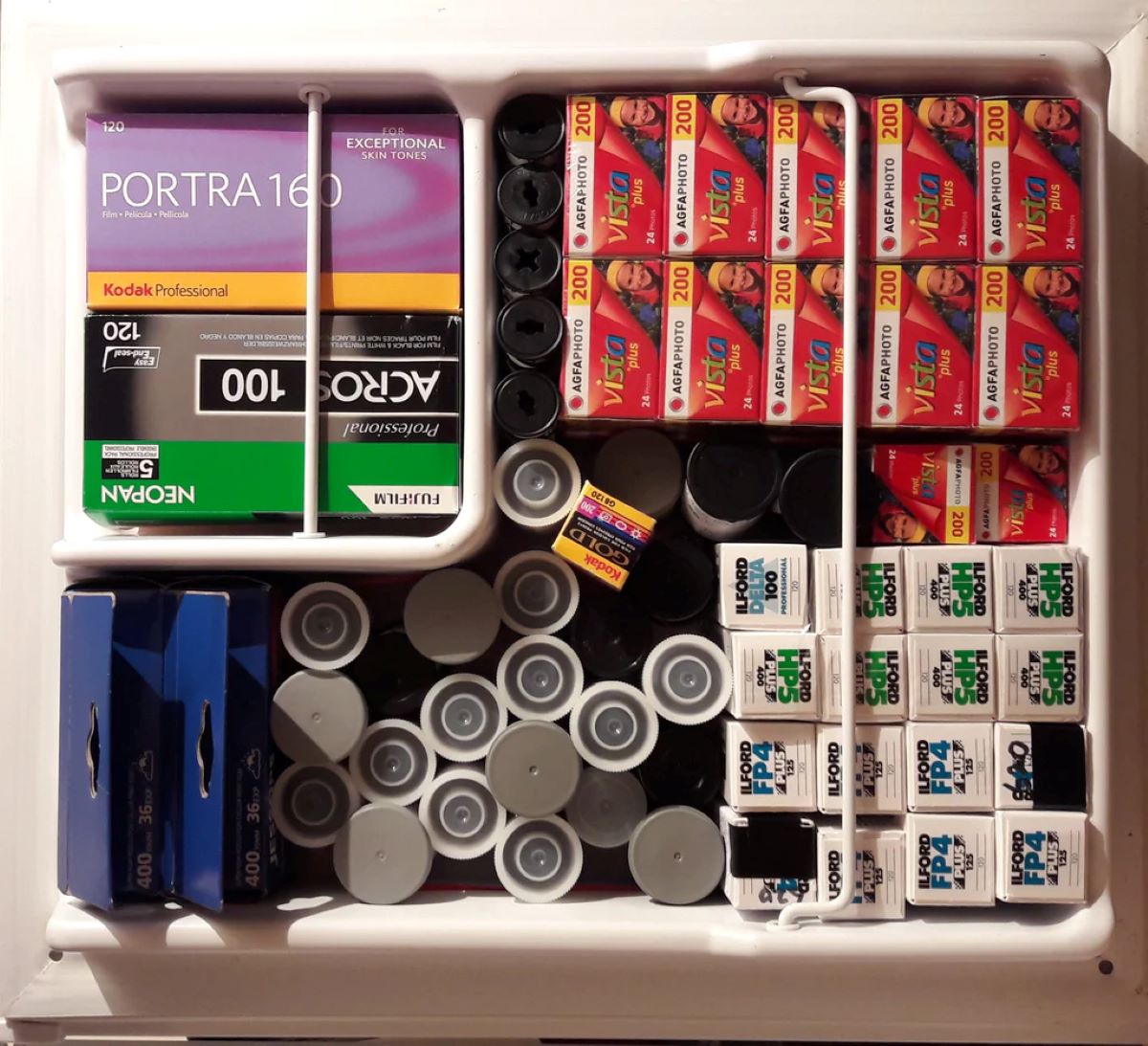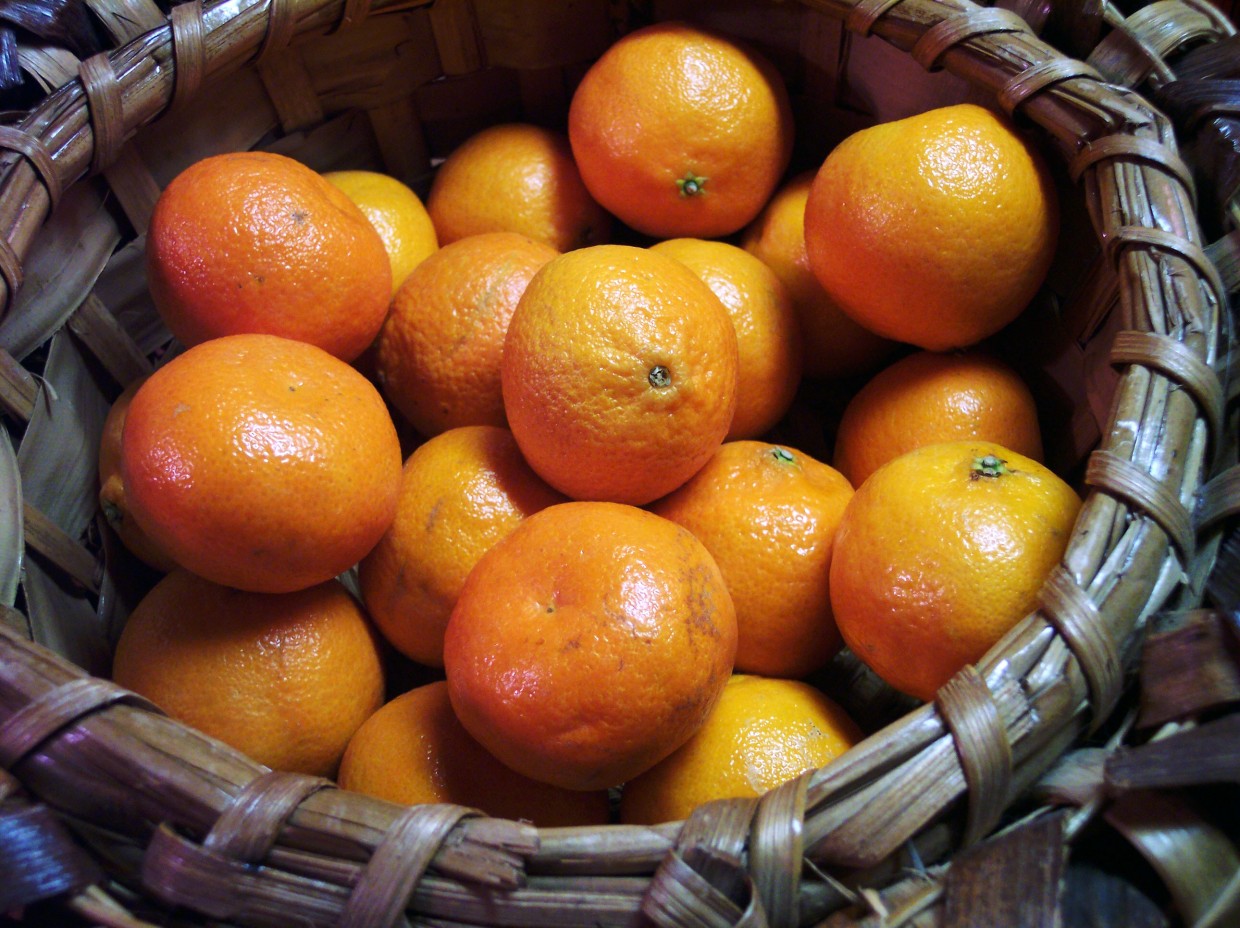

Articles
How To Store Hardtack
Modified: August 27, 2024
Looking for articles on how to store hardtack? Discover the best techniques and tips for keeping your hardtack fresh and edible for extended periods of time.
(Many of the links in this article redirect to a specific reviewed product. Your purchase of these products through affiliate links helps to generate commission for Storables.com, at no extra cost. Learn more)
Introduction
Welcome to our guide on how to store hardtack. Hardtack is a unique type of long-lasting, durable biscuit that has been a staple food for centuries. Originally developed for use in the military due to its extended shelf life, hardtack is now enjoyed by outdoor enthusiasts, survivalists, and those seeking emergency food supplies. However, to ensure that your hardtack remains fresh and edible for an extended period, proper storage techniques are crucial.
In this article, we will explore the ins and outs of storing hardtack. From understanding what hardtack is and why it is worth storing, to choosing the right storage containers and creating optimal storage conditions, we will provide you with a comprehensive guide that will help you keep your hardtack in top condition for a long time.
So, if you are a seasoned adventurer planning your next camping trip, or someone wanting to be prepared for any emergency situation, stay tuned. Let’s dive into the world of hardtack and discover how to store it effectively!
Key Takeaways:
- Properly storing hardtack is essential for maintaining its longevity and quality. By choosing the right storage container, creating optimal storage conditions, and following key steps, you can ensure that your hardtack remains fresh and edible for an extended period.
- Long-term storage of hardtack can be enhanced by using oxygen absorbers, vacuum sealing, and regularly monitoring storage conditions. By following these tips, you can optimize the shelf life and usability of your hardtack supply, ensuring preparedness and convenience.
Read more: How To Store Store-Bought Bread
What is Hardtack?
Hardtack, also known as “pilot bread” or “ship biscuit,” is a type of dry, sturdy cracker-like bread that has been consumed for centuries. It has a rich history, dating back to ancient times when it was commonly used as a food ration for soldiers and sailors during long voyages and military campaigns. Its enduring popularity can be attributed to its long shelf life and portability, making it an ideal staple food for those facing challenging conditions.
Hardtack is typically made from a simple mixture of flour, water, and sometimes salt. The dough is prepared by kneading the ingredients together, then rolled out and cut into small, hard squares or circles. The dough is then baked at a low temperature for an extended period, often twice or more, to remove as much moisture as possible.
The result is a dense, dry, and incredibly hard bread that can withstand rough handling and extreme temperatures. Hardtack’s toughness is what gives it an impressive shelf life, as it resists spoilage for months, or even years, when stored properly. This durability and longevity are why hardtack has become synonymous with survival situations, military rations, and emergency preparedness.
Despite its simplicity, hardtack is a versatile food. It can be consumed as is, providing a crunchy and satisfying snack. It can also be soaked or boiled to soften it, making it more palatable and easier to eat. Some people even use hardtack as a base for meals, incorporating it into soups, stews, or other dishes to add substance and texture.
While hardtack is no longer a primary food source for most people, it remains a popular choice for outdoor enthusiasts, preppers, and those looking for convenient, long-lasting food options. Whether you’re embarking on a camping trip, storing food for emergencies, or simply curious about historical rationing, learning how to store hardtack properly is essential to ensure its lasting quality and taste.
Why Store Hardtack?
Storing hardtack is beneficial for several reasons, making it an excellent addition to your emergency food supplies or outdoor adventures. Let’s explore some of the main reasons why you should consider storing hardtack:
- Long Shelf Life: One of the primary reasons to store hardtack is its exceptional shelf life. When properly stored, hardtack can last for years without spoiling. This makes it an ideal choice for stocking up your emergency food supply, as it can provide sustenance during prolonged periods of limited access to fresh food.
- Portability and Durability: Hardtack is incredibly compact and lightweight, making it easy to carry during outdoor activities such as hiking, camping, or backpacking. Due to its dense and dry nature, it is resistant to breaking or crumbling, even when subjected to rough handling. This durability makes it perfect for situations where fragile or perishable foods are impractical.
- Convenience: Hardtack is a versatile food that can be eaten as a standalone snack or used as a base for various recipes. Its neutral taste allows it to be paired with sweet or savory accompaniments, making it a convenient and satisfying option when other meal options are limited.
- Emergency Preparedness: In times of natural disasters, power outages, or other emergencies, access to fresh groceries may be limited. Having a supply of hardtack on hand ensures that you have a reliable food source that does not require refrigeration or cooking. This can provide peace of mind and security during unexpected situations.
- Historical Significance: Storing hardtack can also be a way to connect with history and learn about the challenges faced by early explorers, soldiers, and sailors. Experiencing the taste and texture of this traditional ration can provide a unique insight into the lives of those who relied on hardtack as a staple food.
Whether you’re an outdoor enthusiast, a prepper, or simply someone who wants to be prepared for unforeseen circumstances, storing hardtack is a practical and wise choice. Its long shelf life, portability, convenience, and historical significance make it an invaluable addition to any emergency food supply or travel kit. In the following sections, we will delve into the specifics of how to store hardtack properly, ensuring its freshness and quality for an extended period.
Choosing the Right Storage Container
When it comes to storing hardtack, selecting the right storage container is essential to maintain its freshness and protect it from moisture, mold, and pests. Here are some factors to consider when choosing the right storage container for your hardtack:
- Airtight: The primary requirement for a storage container is that it should be airtight. Hardtack is prone to absorbing moisture from the environment, which can lead to spoilage or a loss of its characteristic hardness. Look for containers with airtight seals, such as those with rubber gaskets or screw-on lids, to keep humidity out.
- Durable Material: Opt for containers made of durable materials that can withstand impact and resist breakage. Hard plastic or food-grade stainless steel containers are excellent choices, as they provide protection against physical damage and do not interact with the food. Avoid using containers made of materials that may leach chemicals or affect the taste of the hardtack.
- Transparent: While not strictly necessary, transparent containers offer the advantage of easily assessing the condition of the hardtack without opening the container. This allows you to inspect for any signs of spoilage, such as mold or pest infestation, without compromising the integrity of the storage environment.
- Size and Shape: Consider the size and shape of the storage container based on your intended usage. If you plan to store large quantities of hardtack, opt for larger containers to accommodate the volume. However, if you prefer individual portioning or need to keep the hardtack compact for travel purposes, smaller, individually sealed containers may be more suitable.
- Stackable: If you have limited storage space, look for containers that are stackable. This feature allows you to maximize space efficiency and organize your storage area effectively. Choose containers with flat lids or bottoms to ensure stable stacking.
- Labeling: Lastly, consider using containers that allow for easy labeling. Labeling your containers with the date of storage and other pertinent information can help you keep track of the freshness and rotation of your hardtack supply.
Remember that the chosen storage container is only one component of proper hardtack storage. The container should also be placed in an environment with specific temperature and humidity conditions, which we will discuss in the following sections.
By selecting the right storage container, you can ensure that your hardtack remains well-preserved, free from spoilage, and ready to be enjoyed whenever you need it. Now that you have chosen the right container, let’s move on to understanding the proper storage conditions for hardtack.
Proper Storage Conditions
In addition to selecting the right storage container, it’s crucial to create the proper storage conditions for your hardtack. By following these guidelines, you can ensure that your hardtack remains fresh, dry, and free from spoilage:
- Temperature: Hardtack should be stored in a cool, dry place with a stable temperature. Aim for a storage temperature between 50°F (10°C) and 70°F (21°C). Avoid storing hardtack in areas that are prone to significant temperature fluctuations, such as near heating sources or in direct sunlight, as this can impact its quality and shelf life.
- Humidity: Hardtack is highly susceptible to moisture absorption, which can lead to a loss of hardness and a higher risk of spoilage. Maintain a low humidity level of around 60% or lower in the storage area. To achieve this, consider using moisture-absorbing packets or products specifically designed to control humidity in the container.
- Light Exposure: Protect hardtack from direct exposure to light, as it can cause discoloration and promote the growth of mold. Choose a storage location away from windows and other sources of excessive light. If using transparent storage containers, consider wrapping them with opaque materials or storing them in a darker area.
- Pest Control: To ensure the integrity of your hardtack, take measures to prevent any unwanted pests from accessing the storage area. Store your hardtack in clean, pest-proof containers and keep the storage area free from crumbs or food debris that may attract pests. Consider using natural pest repellents or traps, if necessary.
- Avoid Exposure to Air: Once opened, hardtack can quickly lose its freshness when exposed to air. Keep the storage container tightly sealed when not in use to minimize air exposure. If storing individual portions, consider using resealable bags or airtight wrappers to maintain freshness.
By following these storage conditions, you can preserve the quality, texture, and taste of your hardtack for an extended period. However, it’s important to keep in mind that even with proper storage, hardtack may eventually lose its optimal taste and texture over time. Therefore, it’s recommended to periodically check for any signs of spoilage or degradation, as we will discuss in the next section.
Now that you understand the essential storage conditions, let’s move on to the steps required to properly store hardtack to maximize its shelf life and maintain its quality.
Store hardtack in an airtight container in a cool, dry place to prevent it from absorbing moisture and becoming moldy. Adding a desiccant packet can help absorb any excess moisture.
Read more: How To Store Basil From Grocery Store
Steps to Store Hardtack
Storing hardtack properly requires several steps to ensure its longevity and freshness. Follow these simple guidelines to effectively store your hardtack:
- Prepare the Hardtack: Ensure that your hardtack is fully baked and cooled before storing. This helps to remove any residual moisture and prevent the growth of mold or bacteria during storage.
- Select the Right Storage Container: Choose an airtight, durable, and appropriately sized container for your hardtack. Ensure that the container is clean and free from any contaminants.
- Place the Hardtack in the Container: Carefully place the hardtack pieces into the storage container, ensuring that they are properly sealed inside. If using multiple layers, consider using parchment paper or food-safe dividers to separate each layer and prevent potential breakage.
- Seal the Container Properly: Once the hardtack is inside the container, seal it tightly to prevent air and moisture from entering. Double-check that the seal is secure to maintain the freshness and quality of the hardtack.
- Label the Container: If desired, label the storage container with the date of storage or any additional information you would like to note. This helps you keep track of the freshness and rotation of your hardtack supply.
- Store in an Appropriate Location: Place the sealed container of hardtack in a cool, dry, and dark storage area. Ensure that the temperature, humidity, and light exposure remain within the desired range as discussed earlier.
- Periodically Check for Spoilage: Regularly inspect the stored hardtack for any signs of spoilage, such as mold growth, off smells, or pest infestation. If you notice any signs of degradation, discard the affected pieces immediately to prevent contamination.
- Rotate and Refresh: To maintain a fresh supply of hardtack, periodically rotate your stock by consuming or replacing the older pieces. This ensures that you always have a ready supply of edible hardtack on hand.
By following these steps, you can store your hardtack effectively, ensuring its longevity and preserving its quality. Remember to maintain the proper storage conditions and regularly check the stored hardtack to ensure its freshness and suitability for consumption.
Now that you have learned the steps for storing hardtack, let’s move on to the next section, where we will discuss how to check for spoilage and provide valuable tips for long-term storage.
Checking for Spoilage
Regularly checking for spoilage is essential to ensure the safety and quality of your stored hardtack. While hardtack has a long shelf life, it can still be susceptible to spoilage if not properly stored or if exposed to unfavorable conditions. Here are some tips for checking your hardtack for signs of spoilage:
- Inspect for Mold: Check the surface of the hardtack for any signs of mold growth. Mold can appear as dark spots, fuzzy patches, or discoloration on the surface. If you notice any mold, discard the affected pieces immediately, as consuming moldy food can be harmful to your health.
- Smell for Off Odors: Give the hardtack a quick sniff to detect any off or unusual odors. Fresh hardtack should have a neutral smell. If you detect any foul or rancid odors, it may indicate spoilage, and the hardtack should be discarded.
- Look for Pest Infestation: Examine the storage container and the hardtack for any signs of pest presence. Look for droppings or damage caused by insects or rodents. If you suspect a pest infestation, discard the affected hardtack and take appropriate measures to eliminate the pests from your storage area.
- Check for Texture Changes: Break a piece of hardtack and check its texture. Fresh hardtack should be dry, hard, and crispy. If the hardtack appears overly soft, soggy, or crumbly, it may be a sign of spoilage or loss of its characteristic hardness.
- Taste a Small Portion: If the hardtack passes all the visual and odor checks, you can take a small bite to assess the taste. Fresh hardtack should have a pleasant, neutral flavor. If you notice any off or unpleasant taste, it may indicate spoilage, and the hardtack should not be consumed.
It’s important to note that hardtack can become stale over time, even without spoilage or safety concerns. Stale hardtack may still be safe to consume, but it may have a less desirable texture and taste. If your hardtack is stale but free from spoilage, you can try soaking it in a liquid or using it in recipes that require softer or rehydrated bread-like textures.
By regularly checking for spoilage and promptly discarding any contaminated or spoiled pieces, you can maintain the quality and safety of your stored hardtack supply. However, to avoid the risk of spoilage, it’s best to follow proper storage techniques and consume or rotate your hardtack supply on a regular basis.
Now that you know how to check for spoilage, let’s explore some helpful tips for long-term storage of hardtack.
Tips for Long-term Storage
To ensure the longevity and freshness of your hardtack during long-term storage, consider the following tips and best practices:
- Use Oxygen Absorbers: Adding oxygen absorbers to your hardtack storage containers can help extend its shelf life by reducing the presence of oxygen, which can contribute to spoilage. Oxygen absorbers are small packets that contain iron powder and are designed to absorb oxygen within a sealed container. Follow the instructions provided with the absorbers for proper usage.
- Vacuum Seal Bags: If you have access to a vacuum sealer, consider vacuum sealing your hardtack to further enhance its preservation. Vacuum-sealed bags remove the air from the packaging, creating a tight seal and reducing the chances of moisture and air exposure.
- Rotate your Stock: To maintain a fresh supply of hardtack, practice a first-in, first-out (FIFO) approach. When you purchase or make new hardtack, store it behind the older stock. This way, you will consume the older hardtack first, ensuring that your supply remains fresh and avoids any waste.
- Keep an Emergency Kit: Store a separate emergency kit containing a small quantity of hardtack along with other essential items such as water, medication, and first aid supplies. This kit should be easily accessible in case of emergencies, ensuring that you have a reliable food source during unexpected situations.
- Regularly Monitor Storage Conditions: Continuously monitor the storage conditions of your hardtack. Check the temperature, humidity, and light exposure of the storage area and make adjustments if necessary. Regularly inspect the containers and hardtack for signs of spoilage or pest infestation.
- Consider Repackaging: If you buy commercially packaged hardtack that comes in a box or bag, you may want to consider transferring it to airtight, more durable containers for long-term storage. Commercial packaging might not provide the same level of protection as dedicated storage containers.
- Ration Portions: For better portion control and to avoid exposing the entire stock to air and moisture every time you open the container, consider individually packaging smaller portions of hardtack. This allows you to consume only what you need while keeping the rest of the supply intact.
- Keep a Record: Maintain a record of the storage dates, expiration dates, and any other relevant information for your hardtack. This helps you track the freshness and overall condition of your supply, allowing for better organization and planning.
By following these tips, you can optimize the long-term storage of your hardtack, ensuring its freshness, taste, and usability for an extended period. Remember to store your hardtack in a suitable location, regularly check for signs of spoilage, and rotate your stock as necessary.
Now that you have learned valuable tips for long-term storage, let’s wrap up our guide on storing hardtack.
Conclusion
Congratulations! You have now learned the ins and outs of storing hardtack effectively. By understanding what hardtack is and its historical significance, as well as the reasons for storing it, you are well-equipped to begin building a supply of this durable and long-lasting food item.
We discussed the importance of choosing the right storage container, one that is airtight, durable, and of the appropriate size. Additionally, we explored the significance of creating the proper storage conditions, including maintaining the right temperature and humidity levels, avoiding light exposure, and preventing pest infestations.
We walked through the step-by-step process of storing hardtack, from preparing it properly and selecting the right container to sealing and labeling it for easy identification. We also emphasized the importance of periodically checking for spoilage and ensuring proper rotation to maintain a fresh supply.
Furthermore, we provided helpful tips for long-term storage, including the use of oxygen absorbers, vacuum sealing, rotating stock, and keeping an emergency kit. Following these tips will help preserve the quality and longevity of your hardtack supply, ensuring it remains a reliable food source in various circumstances.
Remember, storing hardtack not only prepares you for outdoor adventures or emergency situations but also allows you to connect with history and explore the resilience and ingenuity of those who relied on this hardy ration in the past.
Now, armed with this knowledge, it’s time to start procuring and storing your hardtack supply. Enjoy the peace of mind that comes from being prepared and the convenience of having a versatile and long-lasting food option at your disposal.
Stay safe, happy storing, and bon appétit!
Frequently Asked Questions about How To Store Hardtack
Was this page helpful?
At Storables.com, we guarantee accurate and reliable information. Our content, validated by Expert Board Contributors, is crafted following stringent Editorial Policies. We're committed to providing you with well-researched, expert-backed insights for all your informational needs.















0 thoughts on “How To Store Hardtack”